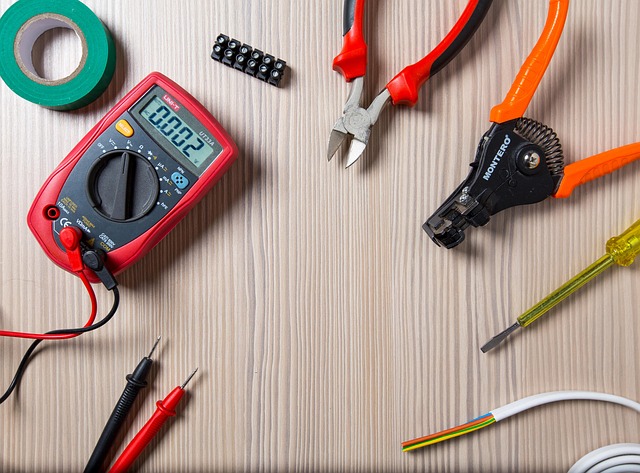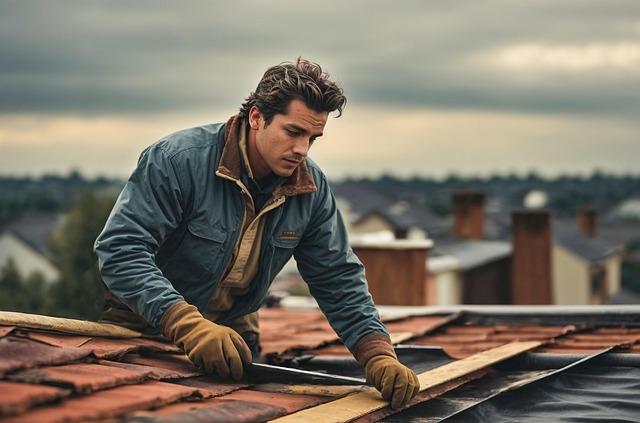Albany’s Emergency HVAC Experts: Navigating Commercial Repairs & Maintenance
Commercial HVAC systems in Albany, NY, face challenges due to their scale and constant operation across diverse spaces like office towers and industri…….
Welcome to an extensive exploration of the critical aspect of commercial HVAC (Heating, Ventilation, and Air Conditioning) repair in Albany, a topic that underpins the comfort, productivity, and sustainability of numerous businesses and public spaces. This article aims to dissect the intricate world of commercial HVAC repair, highlighting its global impact, economic significance, technological innovations, regulatory frameworks, and future prospects within the context of Albany’s unique market. By delving into these aspects, readers will gain valuable insights into why this field is not just about fixing broken systems but also driving efficiency, cost savings, and environmental stewardship.
Commercial HVAC repair in Albany refers to the maintenance, troubleshooting, and replacement of heating, ventilation, and air conditioning systems within commercial buildings, including office spaces, retail stores, hotels, hospitals, and industrial facilities. It involves a multidisciplinary approach, combining mechanical engineering, electrical systems, and environmental science principles to ensure optimal indoor environments. The scope includes:
The concept of HVAC repair has evolved significantly over the past century, driven by advancements in technology and a growing awareness of indoor air quality and energy efficiency. In the early 1900s, mechanical ventilation systems were introduced to improve air circulation in large buildings, marking the beginning of modern HVAC practices. As energy conservation became a global focus in the late 20th century, the industry witnessed a shift towards more efficient equipment and design strategies. Today, commercial HVAC repair Albany is characterized by:
Commercial HVAC repair Albany is not confined to local markets; it has a significant global reach due to several factors:
The trends shaping the commercial HVAC repair landscape vary across regions, influenced by local climates, economic conditions, and regulatory frameworks:
| Region | Trends | Examples |
|—|—|—|
| North America | Focus on Energy Star-rated equipment and smart building automation. | The U.S. Green Building Council’s LEED certification encourages the use of high-efficiency HVAC systems. |
| Europe | Stricter environmental regulations, particularly in the UK and Germany, drive the adoption of eco-friendly technologies. | The EU’s Ecodesign Directive sets energy efficiency standards for HVAC equipment. |
| Asia Pacific | Rapid urbanization leads to increased demand for commercial spaces, requiring efficient and cost-effective HVAC solutions. | China’s “Dual Carbon” goals aim to peak carbon emissions and promote low-carbon buildings by 2030. |
| Middle East & Africa | Focus on sustainable design due to extreme climates and water scarcity. | Dubai’s Net Zero Buildings Initiative aims to make all new buildings net zero by 2030. |
The commercial HVAC repair Albany market is dynamic, driven by factors such as:
Investment in commercial HVAC systems is influenced by:
The economic impact of commercial HVAC repair Albany is substantial:
Technological advancements have revolutionized commercial HVAC repair Albany:
The digital revolution has transformed HVAC repair:
Emerging technologies with potential impact include:
Commercial HVAC repair Albany operates within a framework of local and national policies:
Global agreements shape HVAC repair practices:
Despite its advancements, commercial HVAC repair Albany faces several challenges:
Criticisms of the industry include:
Challenge: An old office building in downtown Albany required a complete HVAC system retrofit to meet new energy efficiency standards and improve tenant comfort.
Solution: A local HVAC contractor implemented a comprehensive plan, replacing the outdated system with high-efficiency mini-split units and smart thermostats. They also upgraded insulation and sealed air leaks.
Outcome: The building’s energy consumption reduced by 30%, leading to significant cost savings for the landlord. Tenant satisfaction improved due to enhanced indoor comfort.
Background: A large retail mall in Albany sought to enhance its energy management and customer experience.
Solution: HVAC systems were integrated with a building management software platform, enabling centralized control and real-time monitoring. IoT sensors provided data for predictive maintenance.
Impact: Energy costs decreased by 15% within the first year, and customers reported improved air quality and temperature consistency.
Scenario: After a natural disaster, several public buildings in Albany sustained damage, requiring temporary HVAC solutions to restore comfort and functionality.
Strategy: A specialized mobile HVAC unit was deployed, providing portable heating and cooling for damaged schools and community centers while permanent repairs were underway.
Result: The swift response ensured the well-being of displaced residents and businesses during the recovery period.
The future of commercial HVAC repair Albany holds several growth areas:
Trends shaping the industry include:
To stay ahead, commercial HVAC repair providers should:
Commercial HVAC repair Albany is a dynamic, critical component of modern business operations, influencing comfort, productivity, and sustainability. The industry’s global impact, technological advancements, and regulatory frameworks underscore its importance on the world stage. By navigating challenges, embracing innovations, and adapting to evolving market demands, commercial HVAC repair providers can ensure efficient, sustainable, and comfortable indoor environments for businesses and communities worldwide.
Q: How often should I have my commercial HVAC system serviced?
A: Regular maintenance is crucial. Most experts recommend annual inspections and cleaning to ensure optimal performance and longevity. However, frequency may vary depending on the system’s age, usage, and local climate.
Q: What are the benefits of upgrading to a smart thermostat?
A: Smart thermostats offer precise temperature control, energy savings, and remote access through mobile apps. They learn user preferences and automatically optimize settings for comfort and efficiency.
Q: Are there any government incentives for commercial HVAC upgrades?
A: Yes, many governments provide tax credits, rebates, or grants to encourage the adoption of energy-efficient technologies, including HVAC systems. Check local and national programs for eligibility.
Q: How can I reduce my commercial building’s energy bills through HVAC optimization?
A: Implement energy management strategies such as programmable thermostats, VSDs, and regular system maintenance. Conduct energy audits to identify areas of improvement and consider retrofitting with efficient equipment.
Q: What are the environmental considerations in commercial HVAC repair?
A: The industry aims to minimize its carbon footprint through energy-efficient systems, sustainable refrigerants, and responsible disposal practices. Adhering to international agreements like the Montreal Protocol and Paris Agreement is essential.

Commercial HVAC systems in Albany, NY, face challenges due to their scale and constant operation across diverse spaces like office towers and industri…….

Commercial HVAC systems in Albany face unique challenges including managing large spaces, maintaining temperatures, ensuring air quality, and meeting…….